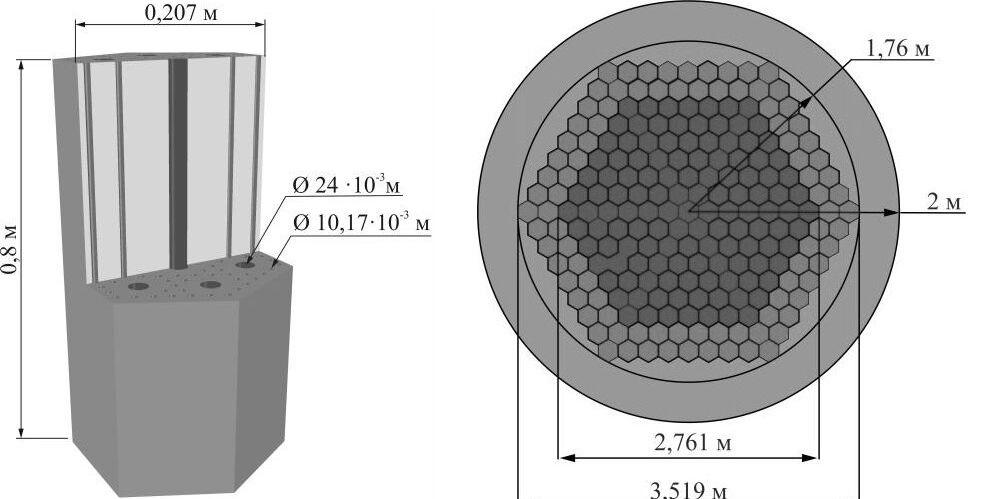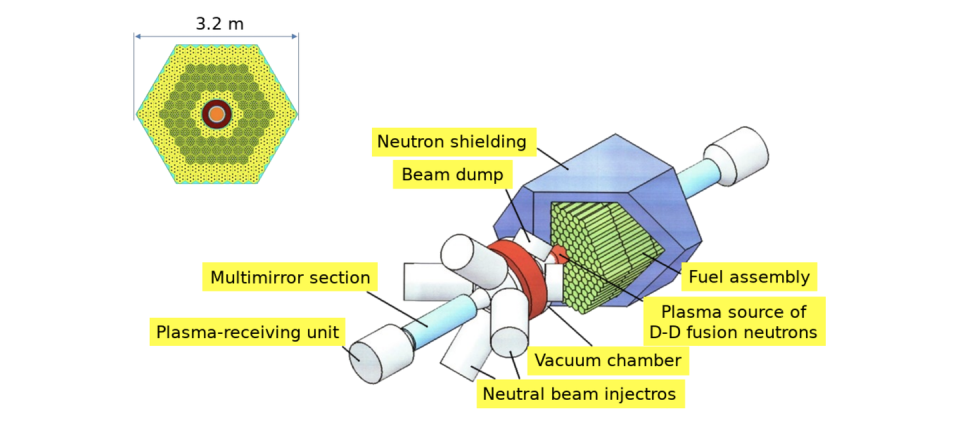Russian Scientists Reveal Plans for Fusion-Fission Reactor

A new paper describes computer simulations of a hybrid fusion-fission reactor that runs on thorium.
Thorium has benefits compared with uranium reaction and has been endorsed by Democratic presidential candidate Andrew Yang.
In the reactor, plasma fusion generates neutrons that fuel subsequent fission.
Russian scientists have published a concept for a new kind of nuclear reactor. It’s a hybrid reactor, meaning it includes both fusion and fission, and it runs almost exclusively on thorium instead of more volatile uranium. In computer simulations, the research team found its novel design of an “energy-generating blanket” could still produce high power with a relatively small footprint and not much radioactive waste.
There’s a lot to like about this design, including how it offers interesting middle-ground solutions in terms of fuel, reactor configuration, and safety. Thorium is one of the most abundant elements of its kind—more abundant than tin, which is so common and accessible that it’s one of the classical elements of alchemy. Uranium isn’t the rarest element in nature, but little of it is “available” in a common or affordable sense. If uranium were an asset, it would be a long-term CD with a penalty for convenient withdrawal.
In the hybrid thorium setup, thorium-plutonium pellets power a high-temperature, gas-cooled reactor. The paper doesn’t specify the gas, but existing coolants include carbon dioxide and helium. Gas-cooled reactors have always offered a way for reactors to make power using un-enriched, regular old uranium, making it more affordable and accessible to more countries. A hybrid reactor running on thorium could fill the same space.
A traditional nuclear reactor runs in critical state, but the hybrid thorium reactor instead operates in near-critical state. Instead of having a chain of neutrons produced by critical reaction, neutrons continue to pour in from a separate source. A magnetic field inside the reactor holds the powerful cloud of ionized gaseous deuterium plasma, which is the fusion part of the fusion-fission reactor. From there, neutrons spill out into a part the scientists call an “energy-generating blanket.” It’s this blanket where subcritical fission takes place, using neutrons from inside the plasma-filled magnetic tube.

The term “critical state” is just a technical one, and these reactors are all shored up by safety and containment, but experts say a subcritical reactor is inherently safer because it requires less containment in order to operate normally. You can safely jump out of an airplane, but if you don’t jump at all, you’re even safer. And thorium itself is far less reactive and explosive to begin with.
The reactor itself is relatively small, with the plasma chamber measuring 12 meters in length. And by combining a fusion reaction with a fission one, the reactor maximizes efficiency. Compared with developing technology like the tokamak, this design could be much more down to earth, with less ramp-up time to performance and less volatility once it’s engaged.
You Might Also Like

